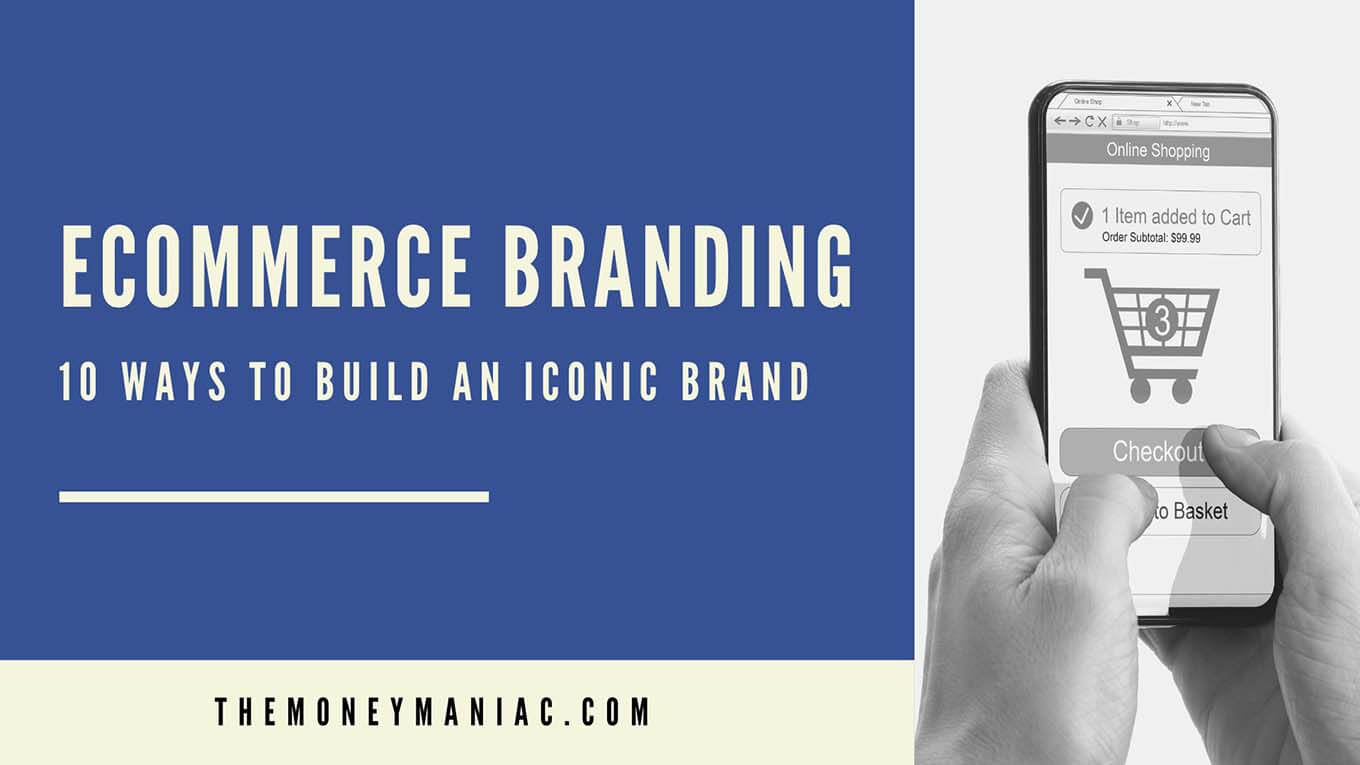The dream of every ecommerce entrepreneur is to create a brand that stands the test of time. A brand that becomes synonymous with quality, value, and customer satisfaction. But how do you create a business that rises above the rest to become an ecommerce icon?
Our ecommerce branding guide covers everything you need to start your journey. By following these 10 tips, you can set the stage for success and lay the foundation for an ecommerce brand that customers will love for years to come.
What is ecommerce branding?
An ecommerce brand is more than just an online store. Ecommerce branding refers to the process of creating a company identity in the minds of consumers. It is the deliberate act of shaping the image and personality of a business.
Many people hear the term “brand” and immediately think of logos and slogans, but brands are much more than that. Ecommerce branding is about creating a lasting impression on consumers that will serve as a foundation for scaling the company. Learning the basics of branding will help you position your ecommerce business for success.
Why is building a brand important in ecommerce?
The online retail space is becoming increasingly crowded, which is why branding is a necessity. A carefully thought-out ecommerce branding strategy helps to set your business apart from the competition.
Here are the 4 key benefits of effective ecommerce branding:
Lowers customer acquisition costs (CAC)
Acquiring new customers is one of the most expensive aspects of running an ecommerce business. By creating a strong visual identity, your marketing campaigns are more effective in building brand awareness. Over time, this leads to a decrease in CAC as customers recognize and seek out your brand.
Increases customer lifetime value (CLV)
A well-executed ecommerce branding strategy helps develop an emotional connection with customers. Your brand persona, values, and story attract customers that align with your company culture. And this bone leads to loyalty, advocacy, and repeat business.
Pricing power
Because ecommerce branding enables a business to differentiate its products — brands do not have to compete on price. Customers see the inherent value in a brand and are often willing to pay more for products and services that are associated with a recognizable name. This pricing power flows directly to the bottom line, improving the profit margins of an ecommerce business.
Builds equity
A strong ecommerce brand has tangible value. It is an asset that can be leveraged to secure funding, partnerships, and top talent. Because of the recognition it has among consumers, a brand also has less downside risk for potential acquirers.
10 ways to build an iconic ecommerce brand
Ecommerce branding is about cementing your place in the minds of consumers. It’s about creating a connection between your company and your customers that leads to loyalty and advocacy.
Here are 10 ways to build an ecommerce brand that will be remembered:
1. Work on your visual aesthetic
The visual appeal of your brand identity is clearly one of the most important aspects of an online business. Because in ecommerce, first impressions matter.
Your logo, color scheme, website design, and even the packaging of your products — all of these pieces need to come together to create a cohesive look and feel. This is what will stick in the minds of consumers and help your ecommerce brand stand out.
After all, how do you want to be remembered? When your brand is mentioned, what is the first thing that should come to mind?
As you design this visual identity, pay close attention to these 3 details:
Color palette
It’s been proven time and time again that colors have a direct impact on human perception. Be strategic in your choice of colors and use different shades to create visual interest.
Netflix and Youtube are two examples of how top brands use color to send a message. The color red, associated with excitement, passion, and seduction, is the perfect choice for content-streaming platforms.
Think about what emotion you want your ecommerce brand to evoke and then use colors accordingly.
Name integration
Your ecommerce brand name should be integrated into your visual identity in a way that is both aesthetically pleasing and easy to read. You want a unique logo that catches customers’ attention, but also one that helps build brand awareness.
This is why the font you use matters. It should be legible but stylized enough to be unique. The ecommerce brand Everlane does a great job of this. Their logo is both modern and classic, with a simple sans-serif font that is easy to read.
Consistency
A key tenet of every strong brand is consistency. From packaging to social media to the in-store experience, every customer touchpoint should reflect the same aesthetic.
Creating a style guide is a helpful way to ensure consistency across all platforms. This document should lay out the details of your ecommerce brand identity, including your logo, color scheme, and typography.
2. Provide exceptional customer service
The number one way to keep your customers returning is to ensure they’re happy. According to Salesforce, 89% of customers are more likely to make a repeat purchase if they had a positive experience initially.
But today’s consumer expects more than just good service — they want exceptional service. This means being available 24/7, responding quickly to questions and concerns, and going the extra mile to solve problems.
To provide this level of service, you need a customer support team that is well-trained and equipped with the resources to succeed. You should also ensure that your team has a central system in place for tracking and responding to customer inquiries.
Finally, you need to set the right expectations with your customers. Be upfront about your customer service policies and procedures so there are no surprises down the road.
Here are a few quick ways to improve your customer service:
- Take an omnichannel approach
- Offer live chat support
- Create a self-service knowledge base
- Invite feedback from customers to improve your core offering
3. Invest in product quality
You can’t out-market a bad product. No matter how detailed your targeting is, how effective your copy is, or how compelling your story is, a bad product will prevent customers from returning. Even with the best customer service in the world, your brand will face returns, poor reviews, and negative word of mouth.
This is why ecommerce brands need to prioritize product quality before anything else.
When starting your brand, focus on perfecting a single product until it is so good that it practically sells itself. Once you have nailed the product, you will have an easier time scaling your business and expanding your product line.
Rather than pushing your brand up a hill, you will be riding a wave of customer satisfaction and positive word of mouth.
4. Share your brand’s story
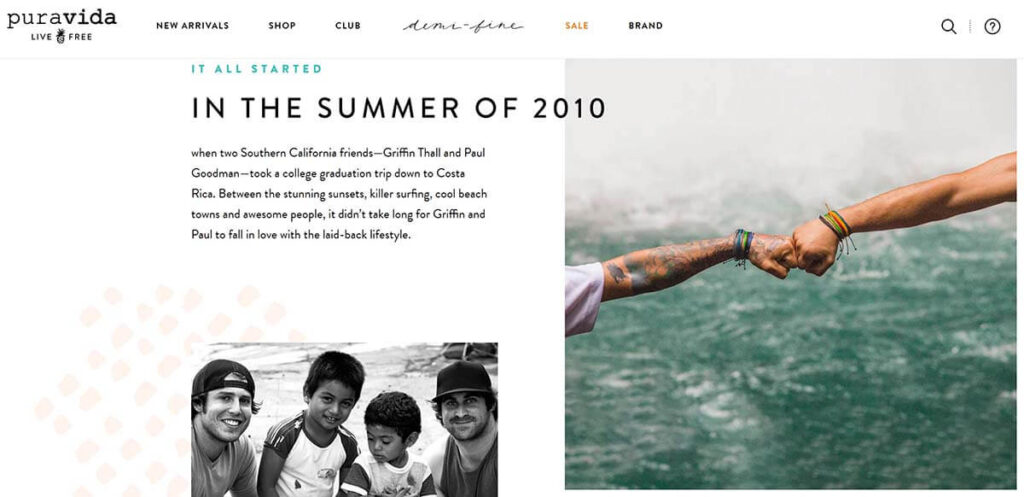
What differentiates your brand from all of the other online stores available to your customers? Perhaps it is the story of how your brand came to be.
Storytelling is a powerful way to emotionally connect with your target audience and build a long-lasting ecommerce brand. People love to support people, and your brand story is the perfect way to show your customers that there is a real person — or team of people — behind the storefront.
Your story should be compelling enough to keep customers engaged, but also authentic enough to show them what goes on behind the scenes. Striking this balance can help you build trust and loyalty with your target audience.
There are many ways to share your story, but the simplest is to create an informative About Us page that answers questions like:
- Who are you?
- Why did you start the business?
- What are your brand values?
- What is your central mission?
Telling a cohesive story that helps customers understand your goals and motivations will humanize your online store. It will give life and personality to your brand and make it more relatable to your target audience.
5. Hone your marketing strategy
As impressive as your ecommerce store may be, what good is it if nobody knows it exists? If you want to build a recognizable brand, you need to establish a customer base. There are a handful of effective marketing strategies to do this.
Initially, consider partnering with social media influencers and content creators. Send them free samples of your product and ask them to post about it on their channels.
You can also collaborate with other ecommerce brands that complement your product offering. For example, if you sell baby clothes, partner with an ecommerce store that sells toys or furniture. By teaming up, you can reach a wider audience and tap into new customer segments.
Finally, don’t overlook the power of email marketing. Once you have a steady stream of leads coming in, you can nurture them through the sales funnel with abandoned cart flows and targeted email campaigns.
Email marketing allows you to stay top-of-mind with your leads and customers, supporting both customer engagement and customer retention. And this is why it is one of the most effective and profitable ecommerce marketing strategies available.
6. Identify your target market
According to Statista, there were approximately 2.14 billion online shoppers globally as of the end of 2021. It’s tempting to think that your business can access all of these people. But in reality, you need to focus on a specific subset of this population — your target market.
Your target market is the group of people who are most likely to buy your products or services. To identify them, consider factors like:
- Geography: Where do your target customers live?
- Demographics: What are their age, gender, and income levels?
- Psychographics: What are their interests, values, and lifestyle choices?
Once you have a good understanding of who your target audience is, you can build your brand to appeal to this base. Remember that you can always branch out later.
But to begin, it’s best to learn as much as you can about your buyer persona. This will help you craft a brand voice that speaks to their specific needs and curate the customer experience according to their preferences.
7. Use social proof
Social proof is a psychological phenomenon where people follow the actions of others to feel like they belong. In other words, it’s the idea that people have an innate desire to conform.
This is especially relevant in ecommerce, where customers often have no personal connection to the brands they’re buying from. In these cases, potential customers will look to the actions of others — reviews, testimonials, social media posts, etc. — to decide whether or not they should make a purchase. And brands with “excellent” reviews reportedly see 31% higher average order values.
There are many ways to use social proof to your advantage. For one, you can encourage user-generated content (UGC) on social media with discounts and gift cards. This may motivate customers to post about your products on their personal channels and use a branded hashtag or tag your ecommerce store.
You can also collect customer reviews and testimonials on your product pages and in email campaigns. These can be displayed on product pages, in ad copy, or in abandoned cart emails.
8. Take part in social development

Depending on your brand persona, you may be able to connect with your target customer on a more meaningful level by taking part in social development. This involves using your online store to support charitable causes or social initiatives.
Customers appreciate and want to be associated with brands involved in improving society. Showing that your brand is part of something bigger and not just out to turn a profit can help foster deeper customer loyalty.
Ideally, choose a cause that aligns with your mission and company values. For instance, Patagonia is a brand known for its environmental sustainability efforts. So, it’s no surprise that they would be involved in initiatives to reduce waste and carbon emissions. This is undoubtedly a part of their brand strategy, but it is also an authentic expression of their core values.
9. Reinforce brand authenticity
In today’s digital marketing environment, anyone can run an ad that reaches millions of people. And while this is an amazing opportunity for budding ecommerce brands, it also presents some challenges.
For one, customers have gotten savvy. They can see right through inauthentic marketing and advertising. So your ecommerce branding strategy must reinforce your brand’s authenticity at every turn.
Radical transparency and honesty can create trust and ensure that customers know what to expect from your business. But be sure to back it up! Deliver on your stated promises and do your best to show not tell.
For example, customers often complain about delivery and shipping times. If you promise lightning-speed delivery, be sure you can keep up with Amazon. Otherwise, be candid about the shipping timeframe.
And if you contribute to a social cause, prove it. Create a blog post with pictures from the event you volunteered at or share a video testimonial from the charity you donated to. This will make it clear to your customers that you’re not just paying lip service.
10. Adapt and improve
The ecommerce landscape is constantly changing. Things evolve quickly and, unfortunately, what works today may not work tomorrow. Algorithms change, marketing tools are updated, competitors emerge, and customer behavior shifts.
To stay ahead of the curve, you need to be willing to adapt and improve. This means that your ecommerce branding strategy can’t be set in stone. You need to be open to trying new things, experimenting, and making adjustments as needed.
Of course, this can be easier said than done. But if you’re not willing to change, you run the risk of losing your edge and becoming irrelevant. After all, if you’re not growing, you’re dying.
Examples of effective ecommerce branding
If you are ready to launch an ecommerce business and build a brand that turns heads, you will want some inspiration. Here are four brands that have leveraged ecommerce branding strategies to scale from small businesses to household names:
ColourPop
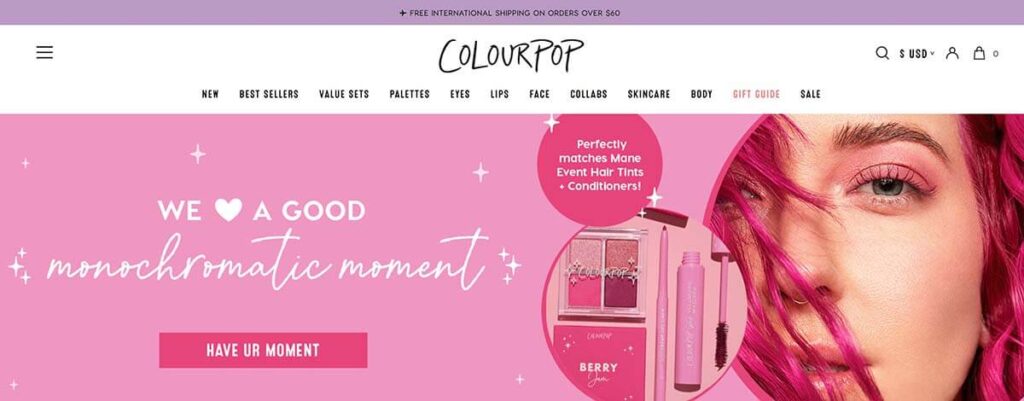
ColourPop made a name for itself in a space dominated by giants like L’Oreal and Estee Lauder by taking advantage of social media. The brand shared its cruelty-free value proposition with influencers on Instagram.
The business also went directly to the consumer, removing retail intermediaries. This reduced ColourPop’s cost structure and allowed the brand to pass savings directly to the customer. The affordable, high-quality cosmetics were a hit with ecommerce shoppers and ColourPop grew quickly.
Gymshark
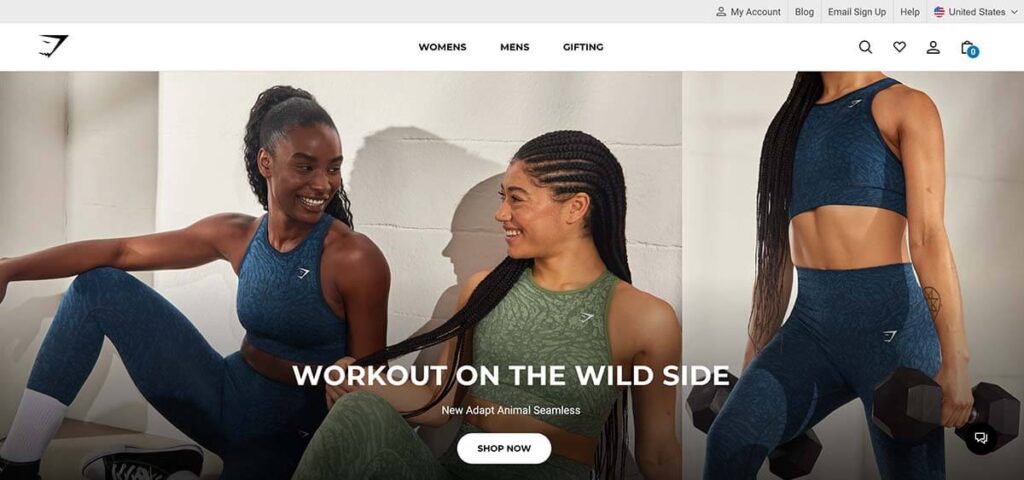
Gymshark, the fitness apparel company worth more than $1 billion, is one of the largest merchants on Shopify.
With a focus on building relationships, Gymshark scaled up by partnering with fitness influencers who had strong ties with their audiences. Rather than seeking out the most famous stars in Hollywood, Gymshark was tactical about finding personalities with dedicated followings in the fitness niche.
However, these partnerships extend far beyond content. Gymshark also creates product lines with its sponsored athletes. This ecommerce branding strategy ensures that the influencers are personally invested in the success of the products they’re promoting.
Ridge Wallet
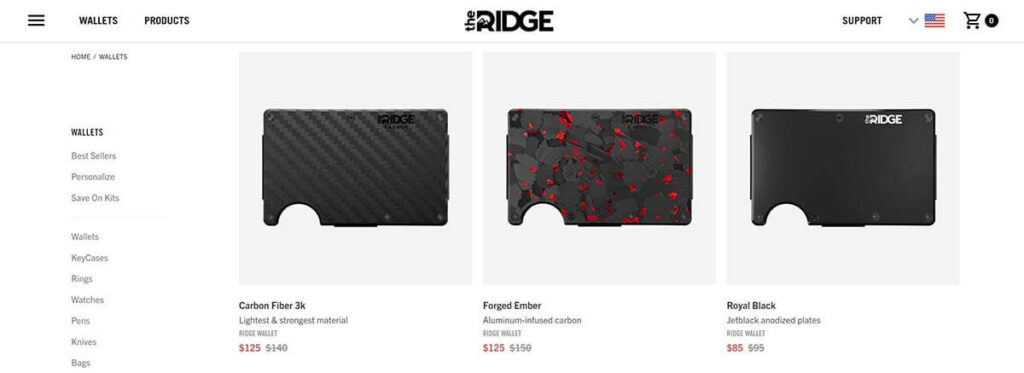
Ridge Wallet started as a father-and-son team on Kickstarter. With no outside investors, the company has grown to more than $50 million in annual sales. Its primary product line is ultra-thin, metal-clad wallets with RFID protection.
The category defining ecommerce brand attributes its rapid growth to product quality and its influencer marketing strategy. Ridge Wallet sponsors many YouTube influencers, ensuring that potential customers can see the product in use up close.
Pura Vida Bracelets
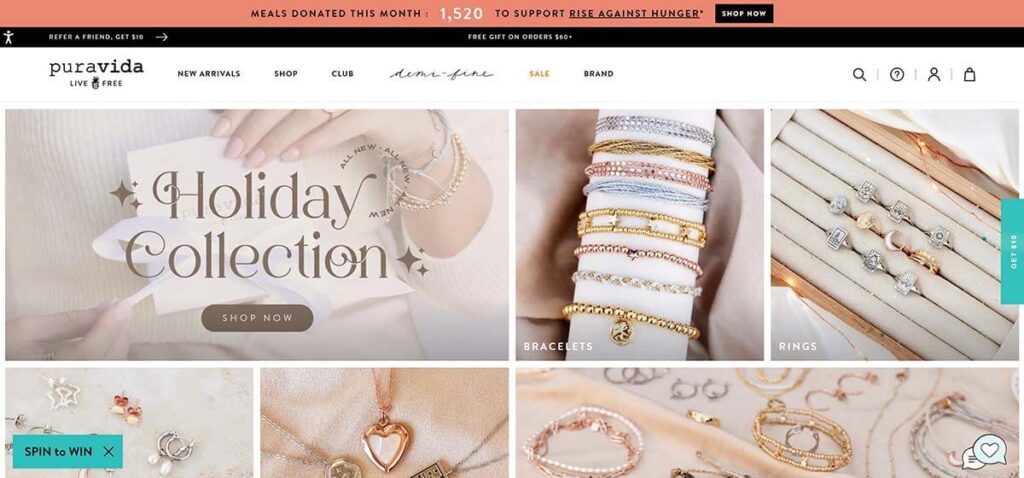
If you think push notifications are overrated, take a look at Pura Vida. Pura Vida is a Costa Rican-inspired jewelry company that has generated more than $1.4 million in sales via push notifications alone.
Pura Vida focuses on customer engagement, using strategies like a loyalty program and personalized abandoned cart emails to keep shoppers coming back. The company also employs interactive elements like countdown timers and in-cart bonuses to increase conversion rates.
These effective marketing tactics have translated nicely over to social media as well. Pura Vida’s consistent visual branding has earned the business more than 2 million Instagram followers to date.
Final thoughts
Ecommerce branding is essential for online businesses of all sizes. By taking the time to build a strong, recognizable brand, you can foster customer loyalty and ensure the longevity of your business.
The challenge is — there is no one size fits all solution to branding. To give yourself the best chance at success, follow our 10 tips and look to existing brands for guidance. If you can stay true to your values and keep your customer’s needs top of mind, you will be well on your way to establishing a successful ecommerce business.
